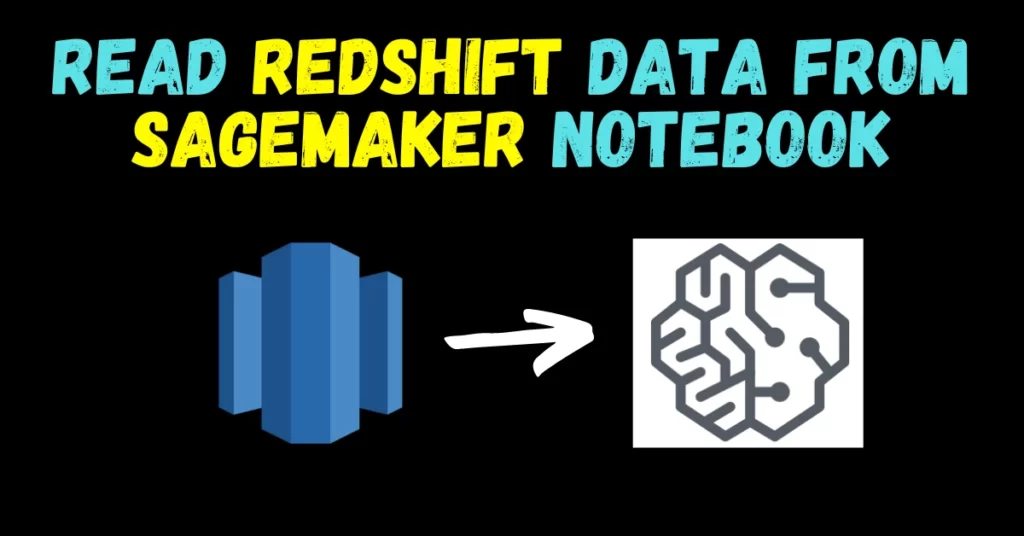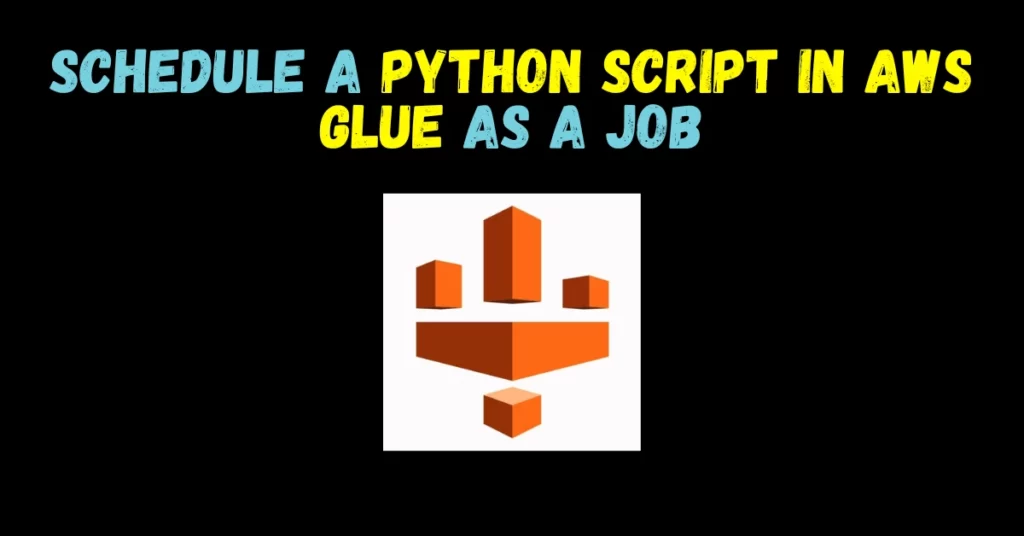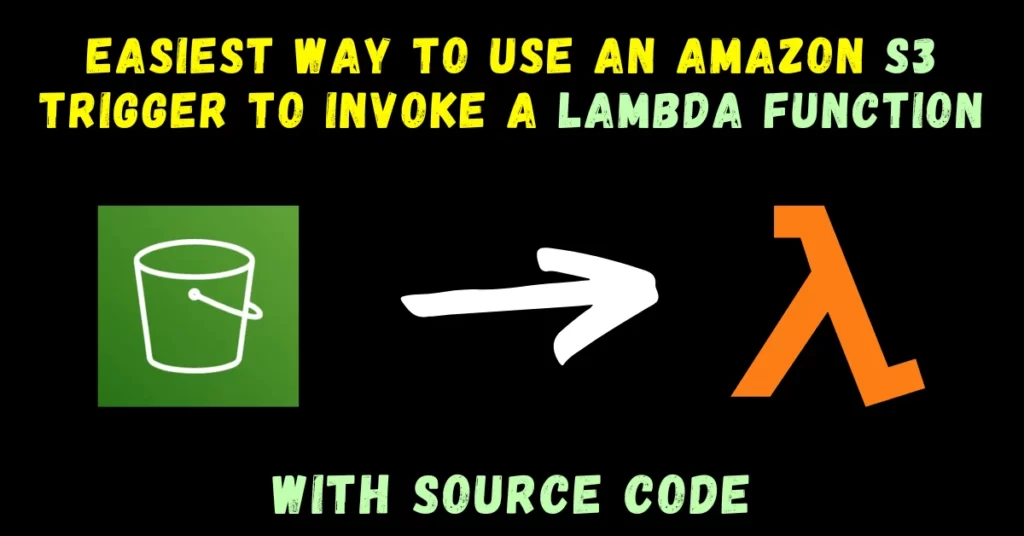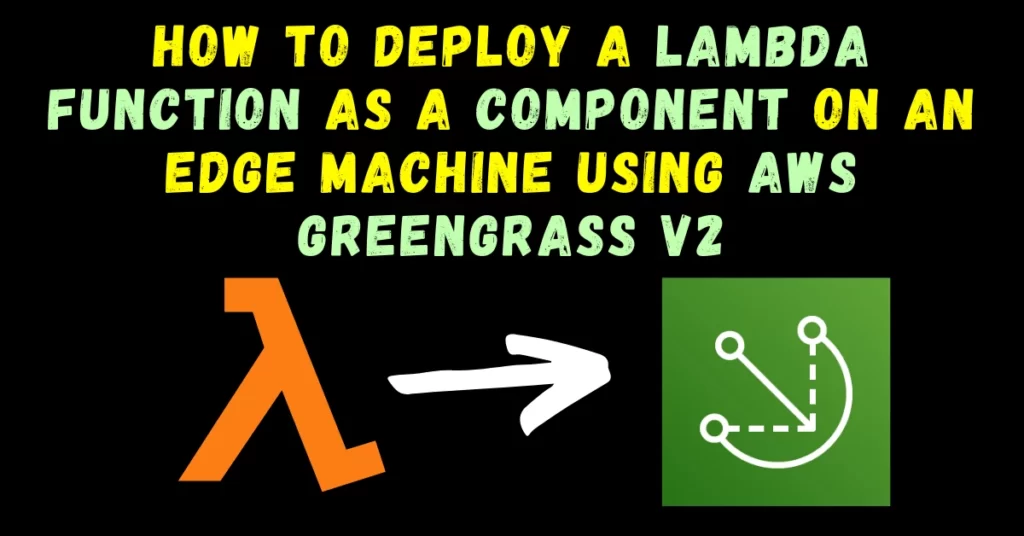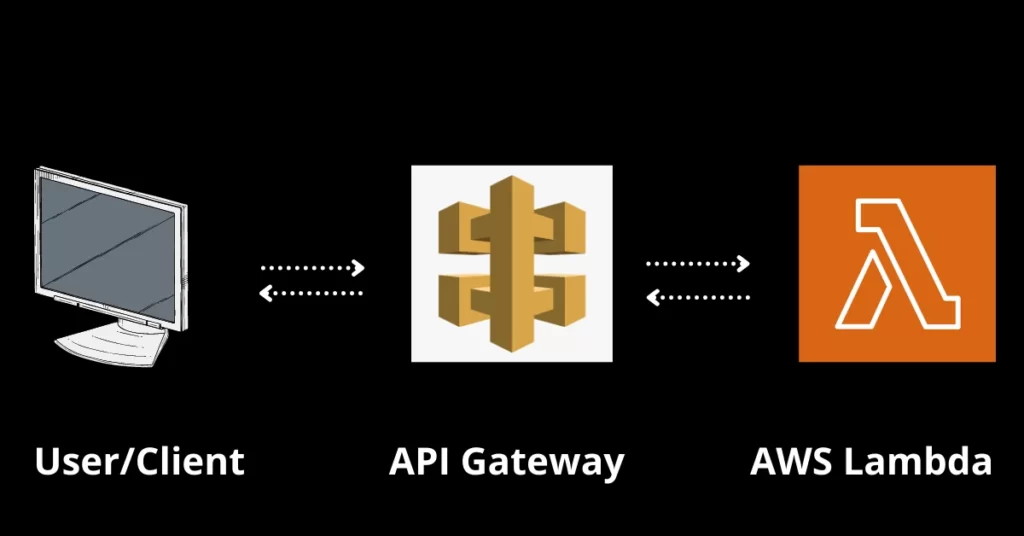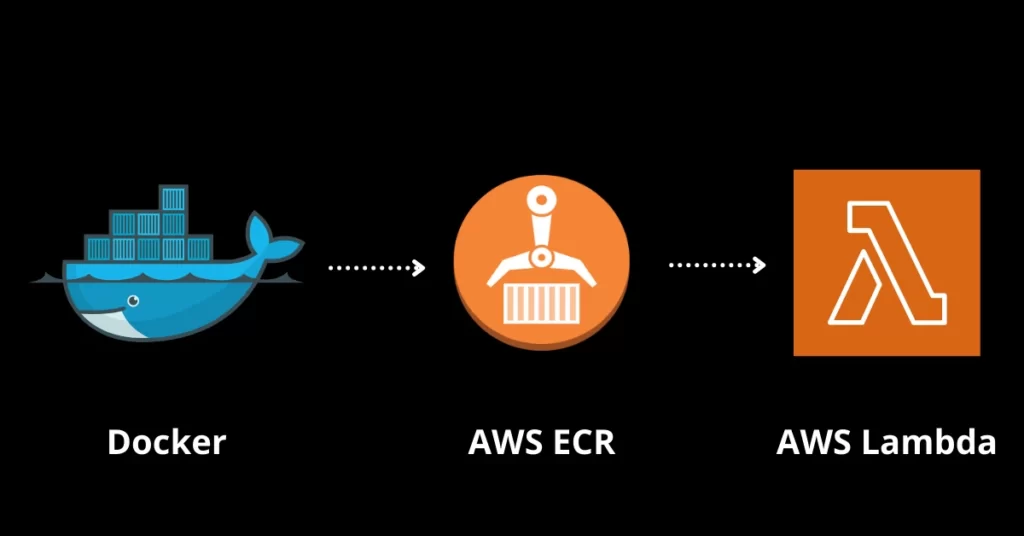Introduction to AWS Tutorials
In today’s rapidly evolving tech landscape, Amazon Web Services (AWS) has emerged as the cornerstone of cloud computing. As businesses and individuals migrate their infrastructure to the cloud, the demand for clear, concise, and informative AWS tutorials has skyrocketed. Welcome to our comprehensive AWS tutorial page, where you’ll embark on a journey to master the art of AWS, whether you’re a seasoned developer or just starting on your cloud computing adventure.

Explore Our Comprehensive Range of Step by Step AWS Tutorials
- Easiest way to read Redshift data from Sagemaker Notebook – 2023
- Easiest way to schedule a Python Script in AWS Glue as a Job – 2023
- Easiest Way to use an Amazon S3 trigger to invoke a Lambda function – 2023
- How to Deploy a Lambda function as a Component on an Edge Machine using AWS Greengrass v2 – 2023
- How to build, test, and deploy your first Lambda on AWS – 2023
- How to create an API in AWS API Gateway using AWS Lambda – 2023
- How to create an AWS Lambda using AWS ECR Docker container Image in Python – 2023
Why AWS Matters?
Before we dive into the tutorials, let’s understand why AWS is essential. AWS provides a vast array of cloud services, including computing power, storage options, databases, networking, analytics, machine learning, and much more. As businesses seek to scale, innovate, and stay competitive, AWS offers the tools and flexibility needed to succeed in today’s digital landscape.
Our Approach to AWS Tutorials…
At machinelearningprojects, we’re committed to demystifying AWS and empowering you to harness its power. Our tutorials cater to all skill levels – from beginners to advanced users – ensuring that you grasp the concepts and techniques at your own pace. With a hands-on approach, we guide you through practical examples, step-by-step instructions, and real-world use cases.
What You’ll Find??
- Getting Started with AWS: A series of tutorials designed for AWS newcomers. Learn how to set up your AWS account, navigate the AWS Management Console, and understand key services like EC2, S3, and RDS.
- Deep Dives into Services: Explore individual AWS services in-depth. Our tutorials cover a wide range, from Elastic Beanstalk for effortless application deployment to Lambda for serverless computing. With our guidance, you’ll be proficient in using services that match your needs.
- Architecting on AWS: Discover best practices for building robust, scalable, and secure architectures. Learn about virtual private clouds (VPCs), load balancing, auto-scaling, and more. Whether you’re designing a simple web app or a complex enterprise solution, our tutorials have you covered.
- Big Data and Analytics: Unleash the power of data with AWS. Dive into tutorials on services like Redshift for data warehousing, Athena for interactive querying, and QuickSight for data visualization. Transform raw data into actionable insights.
- Machine Learning Made Easy: Demystify machine learning with AWS. Our tutorials guide you through Amazon SageMaker for building, training, and deploying models. Whether you’re new to ML or a seasoned data scientist, our content is tailored to enhance your skills.
Setting Up an AWS Account
Creating an AWS Account
Before diving into AWS tutorials, you’ll need to set up an AWS account. Head to the AWS website and follow the prompts to create your account. You’ll need to provide some basic information and payment details.
Configuring Security Settings
Once your account is set up, it’s crucial to configure your security settings. Enable multi-factor authentication (MFA) for an extra layer of security and set up strong access control policies using AWS Identity and Access Management (IAM).
Understanding AWS Services
Overview of AWS Services
AWS offers a vast catalog of services, ranging from computing and storage to machine learning and IoT. Familiarize yourself with the various categories of services available and understand their use cases.
Choosing the Right Services for Your Needs
With so many services to choose from, it’s essential to select the ones that best suit your requirements. Consider factors such as scalability, performance, and cost when making your decisions.
Getting Started with EC2 Instances
Launching Your First EC2 Instance
Amazon Elastic Compute Cloud (EC2) allows you to rent virtual servers in the cloud. Follow our tutorial to launch your first EC2 instance, choosing the appropriate instance type, operating system, and configuration options.
Configuring Instance Settings
Once your EC2 instance is up and running, learn how to configure its settings, including network configuration, security groups, and storage options.
Working with S3 Buckets
Creating an S3 Bucket
Amazon Simple Storage Service (S3) provides scalable object storage in the cloud. Learn how to create an S3 bucket, set access permissions, and configure bucket policies.
Uploading and Managing Objects
Explore the various ways to upload objects to your S3 bucket, whether through the AWS Management Console, command-line interface (CLI), or software development kits (SDKs). Learn how to manage your objects, including versioning, encryption, and lifecycle policies.
Setting Up a Basic AWS Lambda Function
Creating a Lambda Function
AWS Lambda lets you run code without provisioning or managing servers. Follow our tutorial to create a basic Lambda function, choosing your preferred programming language and configuring triggers.
Configuring Triggers and Permissions
Learn how to set up triggers to invoke your Lambda function, such as API Gateway events or S3 bucket notifications. Configure IAM roles to grant necessary permissions to your Lambda function.
Understanding Networking in AWS
Overview of VPCs and Subnets
Amazon Virtual Private Cloud (VPC) enables you to create isolated networks within the AWS cloud. Understand the concepts of VPCs, subnets, route tables, and internet gateways.
Configuring Security Groups
Security groups act as virtual firewalls for your EC2 instances, controlling inbound and outbound traffic. Learn how to configure security groups to restrict access based on your security requirements.
Monitoring and Managing Your AWS Resources
Using CloudWatch for Monitoring
Amazon CloudWatch provides monitoring and observability for your AWS resources. Learn how to set up CloudWatch alarms to receive notifications when certain thresholds are exceeded.
Setting Up Alarms and Notifications
Configure alarms to monitor metrics such as CPU utilization, network traffic, and storage usage. Set up notifications via email, SMS, or other channels to alert you to any issues.
Scaling Your Infrastructure with Auto Scaling
Configuring Auto Scaling Groups
Auto Scaling automatically adjusts the number of EC2 instances in your fleet based on demand. Set up Auto Scaling groups and policies to ensure optimal resource utilization and availability.
Setting Up Scaling Policies
Define scaling policies to control how Auto Scaling responds to changes in demand. Configure scaling triggers based on metrics such as CPU utilization or request counts.
Securing Your AWS Environment
Implementing IAM Policies
AWS Identity and Access Management (IAM) allows you to manage access to AWS services and resources securely. Create IAM policies to grant least privilege access to users and roles.
Enabling Multi-Factor Authentication (MFA)
Add an extra layer of security to your AWS account by enabling multi-factor authentication (MFA). Require users to provide a unique authentication code in addition to their password when signing in.
Advanced AWS Concepts
Using CloudFormation for Infrastructure as Code
AWS CloudFormation enables you to provision and manage AWS resources using code. Learn how to create templates to define your infrastructure as code and automate deployments.
Implementing High Availability Architectures
Design highly available architectures that minimize downtime and ensure resilience. Explore strategies such as deploying across multiple Availability Zones and using load balancers for traffic distribution.
Best Practices for Cost Optimization
Understanding AWS Pricing Models
AWS offers various pricing models, including pay-as-you-go, reserved instances, and spot instances. Understand the pricing implications of different services and deployment options.
Implementing Cost Optimization Strategies
Optimize your AWS spending by rightsizing instances, leveraging discounts, and implementing cost allocation tags. Monitor your usage closely and adjust your resources as needed to avoid unexpected costs.
Troubleshooting Common AWS Issues
Identifying and Resolving Connectivity Issues
Learn how to troubleshoot network connectivity issues between your AWS resources and external services. Check security group rules, network ACLs, and route table configurations for potential misconfigurations.
Troubleshooting Performance Problems
Diagnose and resolve performance issues with your AWS services, such as slow response times or high latency. Use CloudWatch metrics and logs to identify bottlenecks and optimize your configurations.
Keeping Up with AWS Updates and Trends
Subscribing to AWS Blogs and Newsletters
Stay informed about the latest AWS announcements, updates, and best practices by subscribing to official AWS blogs and newsletters. Learn from case studies, product launches, and expert insights.
Participating in AWS Community Forums
Engage with the AWS community through online forums, discussion boards, and user groups. Share your experiences, ask questions, and collaborate with other AWS users to solve problems and exchange knowledge.
Conclusion
Embrace the future of cloud computing with confidence by mastering AWS through our comprehensive tutorials. Whether you’re looking to bolster your career, innovate your business, or simply expand your skill set, machinelearningprojects is your trusted companion on this journey. Start your AWS adventure today and unlock the full potential of cloud technology.
FAQs
Who are these tutorials designed for?
Our AWS tutorials are designed to cater to a wide audience, including beginners, intermediate users, and advanced developers. Whether you’re just starting with AWS or looking to deepen your expertise, our tutorials provide valuable insights for learners of all levels.
Are these tutorials free to access?
Absolutely! We believe in democratizing knowledge. All our AWS tutorials are available for free, so you can access them anytime and embark on your learning journey without any barriers.
How often are the tutorials updated?
We are committed to keeping our tutorials current with the ever-evolving AWS ecosystem. We regularly update our content to reflect the latest features, services, and best practices, ensuring you receive the most up-to-date information.
Do I need an AWS account to follow the tutorials?
For most of our tutorials, having an AWS account is recommended as it allows you to follow along with hands-on examples. However, some tutorials focus on theoretical concepts and do not require an account.
Can I request a tutorial on a specific AWS service?
We love hearing from our community! If you have a specific AWS service or topic in mind that you’d like us to cover, feel free to reach out. While we can’t guarantee immediate coverage, we’ll certainly consider your request for future tutorial updates.
Are there any prerequisites for these tutorials?
Prerequisites vary based on the tutorial’s complexity. Basic familiarity with cloud computing concepts can be helpful, especially for beginners. Some advanced tutorials might assume a certain level of prior AWS knowledge. Check the tutorial’s description for specific prerequisites.
How can I interact with other learners or ask questions?
We encourage you to join our thriving community of learners. You can engage with fellow learners, ask questions, share insights, and exchange ideas through our comments section. Learning together enriches the experience for everyone.
Can I share these tutorials with others?
Absolutely! We encourage you to share the knowledge. If you find our AWS tutorials valuable, feel free to share the links with your peers, colleagues, or anyone interested in learning about Amazon Web Services.
Are certifications covered in these tutorials?
While our primary focus is on practical skills and conceptual understanding, some tutorials might touch on topics relevant to AWS certifications. However, we recommend using official AWS certification resources for dedicated exam preparation.
How can I stay updated with new tutorials?
To stay updated with our latest AWS tutorials, you can subscribe to our newsletter, follow us on social media platforms, or regularly visit our tutorial page for new content releases. Don’t miss out on enhancing your AWS skills with our fresh insights and guidance!
Check out my other machine learning projects, deep learning projects, computer vision projects, NLP projects, and Flask projects.

